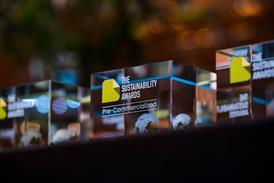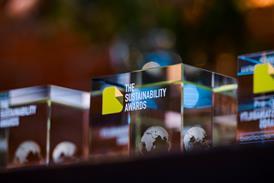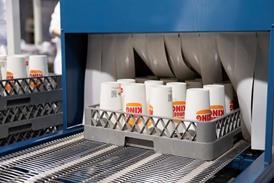
Unilever recently acquired refillable deodorant company Wild for around £100 million. In this article, Jo Barnard, founder and creative director of industrial design and innovation agency Morrama, gives us an inside look into the design journey that took Wild from initial crowdfunded concept to global category leader.
Freddy Ward and Charlie Bowes-Lyons approached Morrama in 2019 to design the world’s first refillable deodorant with plastic free refills. Nine months later, in the spring of 2020, the Wild deodorant launched in the UK. Five years on and Wild is the UK’s leading refillable deodorant brand and has recently been acquired by Unilever for a reported £100 million.
Over 250 million deodorants are bought in the UK each year, many of these are disposable and made from plastic. Noticing a growing customer demand for more sustainable options, Wild set out to make personal care products single-use plastic free.
But, as with anything that’s innovative and looking to disrupt a major industry, the journey hasn’t been without its challenges. From sourcing sustainable, desirable, materials to iterating within the constraints of the very first product that went to market, it’s been a complex and unique journey.
Challenge 1: Realising a plastic-free vision
On receiving the initial brief, we knew we had to start with the refill. We removed the need for any plastic components by moving the twist mechanism - the screw thread and the plate that moves up and down - into the case.
This allowed us to explore fully-paper solutions that could be composted or recycled. Initially, we considered making it from paper that was shaped using a low-cost rolling process - like a toilet roll - instead, however, we chose to design it for pulp moulding for stability and consistency at scale. Plus one additional user experience benefit - it meant we could design the product so that you could wind the refill back down.
The plastic-free refill was born; made from a paper pulp made up of bamboo and bagasse and compostable in six months in a home composting environment.
Challenge 2: Making deodorant desirable
We chose to work with aluminium for the case, despite the higher cost and embodied carbon compared to most plastics, due to the desirability. Wild’s refillable deodorant was going to be more expensive than most single-use deodorants on the market; resulting in an RRP of £12 for a customer’s case and first refill.
A big difference from the £2.50 price tag of the typical single use stick deodorant on the market at the time. To compete, Wild had to offer something unique to customers - we had to make deodorant desirable.
Keeping the form itself simple and timeless, the aluminium case was designed for printing. From ongoing collaborations with Emma Bridgewater, to charity partnerships such as the CoppaFeel boob case, Wild’s use of colour and print has set them apart from traditional personal care products and ensures there is a design for everyone.
Challenge 4: It’s never the final version!
The first product wasn’t perfect. Getting to market so quickly had left little opportunity for extensive testing on the packaging and by 2022 Wild had a wealth of customer feedback making it clear updates were needed.
There was another significant driving factor; cost. In order for Wild to scale and ensure repeat refill, they needed to be more widely available in retail. However, to make this work as a business they needed to reduce the packaging cost and improve the reliability and customer satisfaction. They returned to us in September 2022 with these new objectives.
With well over 500,000 cases sold, we had to ensure that any changes to the case would be backwards compatible. New refills had to fit into first generation cases and visa-versa, otherwise progress made with refillability would be negated.
Analysing thousands of reviews and watching ethnographic research footage of people using their deodorant, guided the design process. In order to make the case more intuitive and easier to use, particularly for older users, we removed the side buttons.
To address complaints over leftover deodorant, we ensured the new case could be wound further up and also made a change to the refill itself that would help solve the problem for existing customers. A few months after launch, complaints about leftover deodorant dropped to nearly zero.
We also made the case more compact, reducing size and cutting material by 18%, resulting in both a cost and emissions reduction.
All of this was guided by Wild’s customers, made possible by Wild’s commitment to community building. Even today post mass-market success and Unilever acquisition, the first cohort of customers is still the most loyal. They were excited to be part of something new and Wild took the opportunity to develop a two-way relationship which allowed us to gain valuable insights and continually iterate and make improvements across all of the Wild product range.
Future of sustainability in cosmetics
To date Wild have shipped over 40 million refills, saving 720 tonnes of disposable deodorants and have thrown open the refill market in the UK. They made it look easy, but behind the scenes it’s been a journey of risk and reward.
The trust between the partners involved, from operations to design, manufacturers to logistics, has meant that we can work quickly and keep momentum on projects. This pace and agility has been fundamental to Wild being first to market time and again with both the deodorant, body wash and refillable lip balm.
Packaging in personal care products is complicated. Creating sustainable solutions is not just a case of selecting more environmentally friendly materials and options for shipping. You have to go back to the drawing board, look at every element of the product and think about how they could be re-designed, how they will be used and how much it will all cost. Without true and extensive product innovation we won’t succeed in shifting customers’ behaviour to adopting more sustainable solutions.
The success of Wild demonstrates that with a laser focus on achieving a vision, a collaborative approach, listening to feedback and a willingness to experiment, it is possible to make sustainability desirable. It also shows that design is key.
If you liked this story, you might also enjoy:
The ultimate guide to the Packaging and Packaging Waste Regulation in 2025
How are the top brands progressing on packaging sustainability?
Everything you need to know about global packaging sustainability regulation in 2025
The key to increasing the use of reusable packaging in supermarkets











No comments yet